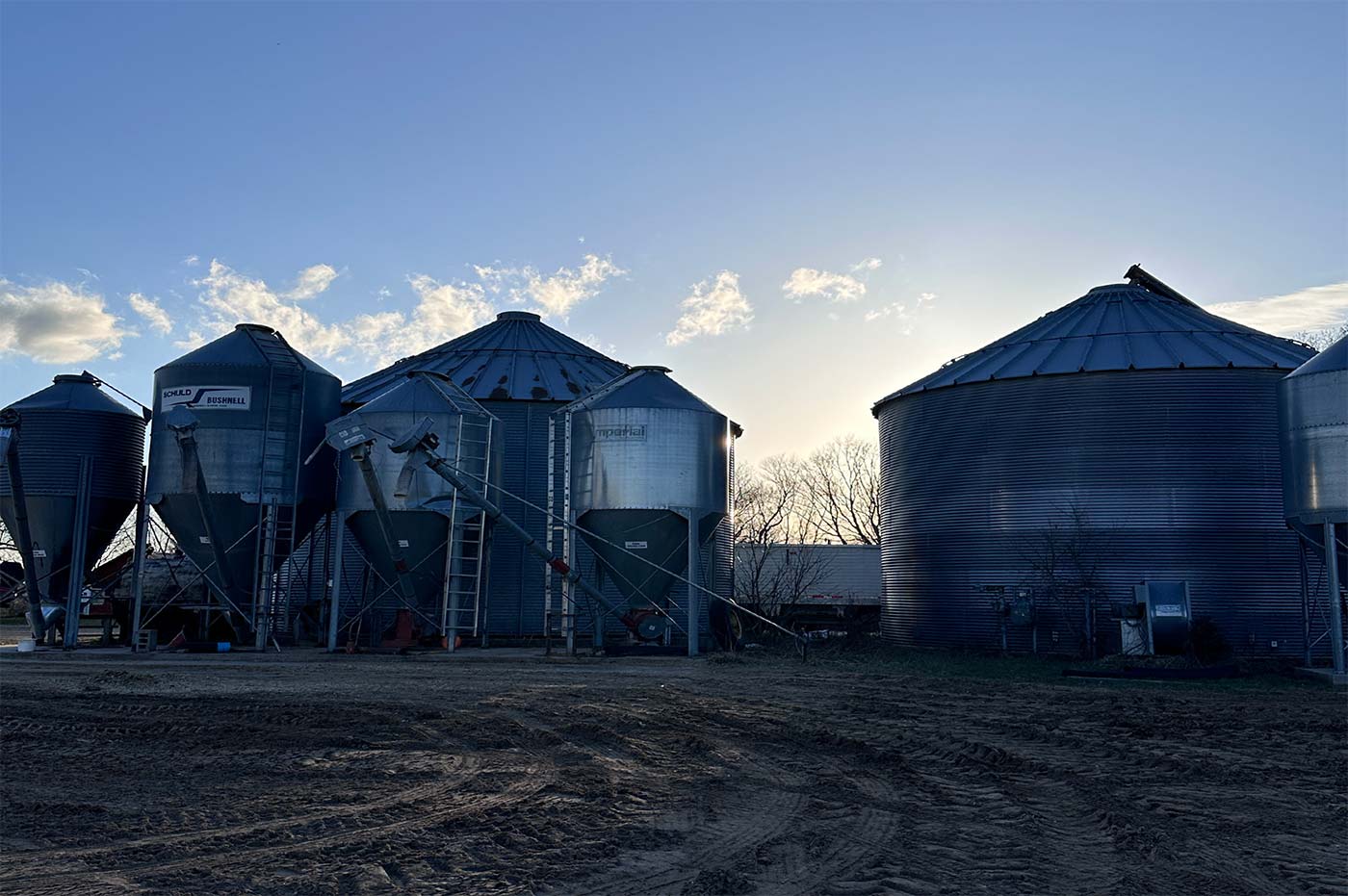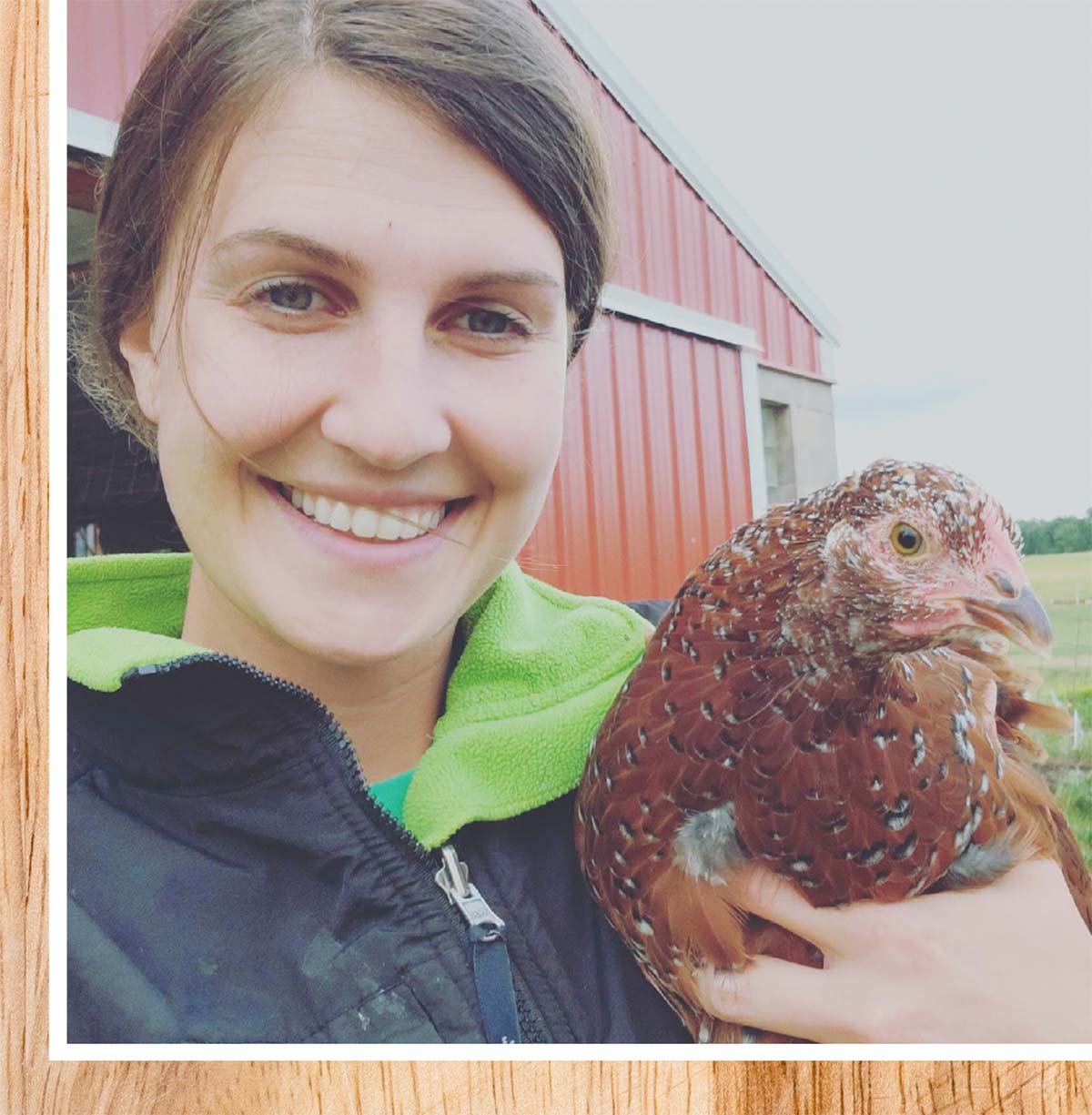Meat Shares
A Look at Two Wisconsin Farms
THROUGHOUT HER LIFE Amy (Manske) Eckelberg’s kitchen table has held food mostly fro m her own family’s farm. Considering this New London area farm is 159 years old, t his is true for generations of Manske children. Amy just assumed that all people had the luxury of knowing where their food comes from and its journey from farm to table. “When I went to college, I realized this just wasn’t true. It wasn’t something a lot of my peers thought about. I want people to have the same confidence in their food system that I do.”
When I met Jeffrey Lutz of Lutz Family Farms Heritage Meats, a few days later, he echoed the same sentiment. There are two homes on the beautiful Lutz family farm; his parents live in one, and he, his wife Kelsey, and their two children live in another. His children are the sixth generation to live on the farm. Jeffrey stressed the importance of knowing what goes into our food. “There are no GMOs, no herbicides. My kids eat this food. It’s important for people to know where their food comes from.” Where does Lutz Family beef come from? Let’s just say those tens of cattle look just as content and more well-kempt in their pasture than my one golden retriever lying on our couch.
Amy’s passion to talk to consumers led her to begin to take interest in her dad’s cousin’s produce stand at the Appleton farmer’s market. The Manske Farms stand has been in front of Houdini Plaza for almost 30 years every summer Saturday. Primarily a dairy farm, it was in 2014 that Manskes expanded and built a brand new milking parlor with a large focus on technology. In the years following, they started raising beef and in 2022 they officially started selling beef directly to consumers. They also grow a variety of produce and sweet corn for their farmers market stand. Amy highlighted her rewarding relationship with customers. “So much of what we do is data driven. We need to keep track of what cuts of beef are selling. I might sell ten roasts on a Saturday, and then sell none on the next Saturday. Forming relationships with weekly customers helps me determine what to bring the next week. My regular customers will perhaps ask me to bring flank steak on an upcoming Saturday and I can do that for them and have it ready."
Experiencing the charm and convenience of local farmers’ markets is only part of the reason to buy local; buying local leads to learning about farming practices from those who care for these animals daily. Cattle on the Manske farm have a computer chip in their ear as part of its identification tag. A database system monitors the animals’ health and notifies when something is off. Amy’s parents and brother and farm owners, Matt, Kathy and Jared, meet with a veterinarian and a nutritionist bimonthly to assess the animals’ health and determine how their diet might need to change. Their animals eat a “total mix ration” of corn, corn silage, hay and minerals. Apparently, cattle, like toddlers, pick out the “green stuff” so their food is mixed in what looks like a giant mixing bowl to a “casserole consistency” to ensure the animals get their needed nutrients. In addition to all the work farmers must do, they also take the time to disguise a stubborn cow’s vitamins.
... Apparently, cattle, like toddlers, pick out the “green stuff” so their food is mixed in what looks like a giant mixing bowl to a “casserole consistency” to ensure the animals get their needed nutrients. In addition to all the work farmers must do, they also take the time to disguise a stubborn cow’s vitamins.

While the Lutz family would certainly welcome sharing their passion for farm to table food in a farmer’s market setting, the 200 plus steers they harvest annually are already usually spoken for well in advance of a Saturday morning. The Lutzes have created a unique “marketplace” of the Park-n-Ride on Good Hope Road in Milwaukee. Their website posts the dates their truck will distribute there, and people order months in advance, many of them regular customers from Milwaukee and Chicago. Their website features different cuts of meat and also allows customers to choose from grass fed or grain fed cows. The Lutz family needs to create a ration for the grain-finished cattle, and they also work with an agronomist who advises them on effectively preparing pastures so that animals feed from a diverse mix of grasses and legumes, including cool season grasses and warm season grasses. The farm also alternates annually between raising soybeans and corn and cattle get turned back out on to that.
The Manske family outsources their butchering, processing, and packaging to Roskom Meats out of Kaukauna. The USDA enforces very strict guidelines regarding butchering and processing. Matt Manske stressed that a butcher is required to have a license, a separate space, and be part of many inspections. A farmer cannot butcher their own beef if they are planning to sell publicly. This ensures a sanitary, humane, compassionate environment for cattle on their farm. Jeffrey Lutz expanded on the butchering guidelines. The Lutz family uses various butchers depending on their availability and demand, and regardless of the butcher, the process is regulated and thorough. The morning I met with him, Jeffrey had just taken five steer to be harvested. When dropping off a live animal, a Food and Safety Inspector meets to inspect the animal. The organs and lymph nodes of the animal then are also tested to look for any disease or sickness, bacteria, or chemicals.
Harvesting cattle from various farms, like some butchers do, engages a process in which the animal identification system comes into play in the end to ensure butchers harvesting cattle from various farms get their own beef in return; even after they have gone through the slaughtering process, animal identification remains with this meat. Manskes work with Roskoms to make sure they offer a variety of options but only have all-beef products. Roskoms also packages the beef in the cuts that Manskes feel will sell, where they head with them to market. Amy stated, “Prices of meat and milk are driven by market. Farmers are price takers, not price makers. By selling directly to people, we can keep the pricing more consistent on our end. Roskoms are great people to work with. They continually work with us to provide us with the cuts of the meat that our customers enjoy.”

Kelsey Lutz
Not only does animal identification technology help determine an animal’s health, but it is integral to DNA analysis when planning the makeup of a herd. On the Lutz farm, animals are bred with a specific genetic make up in mind. DNA is sent in to determine if a potential sire is indeed a Waygu, specifically an Akaushi, steer. Then both sires’ and mothers’ DNA are scrutinized for certain genetic traits before they are bred. “We really focus on the meat quality traits including, the marbling, the tenderness, and muscling. Certain sires perform better in different areas. We select sires to optimize carcass traits and the consumer's eating experience." stated Jeffrey, who has a degree in animal science with a meat animal emphasis that focussed on finishing cattle and pork, works for a cattle genetics company and travels throughout the country helping farmers select for different traits they want their herd to have and then breed accordingly.
For generations, the Manske and Lutz families have provided clean, healthy food for families at kitchen tables throughout Wisconsin. Because of their drive to embrace new knowledge and technology as well as sustainable practices, northeast Wisconsinites can continue to enjoy the highest quality beef.





